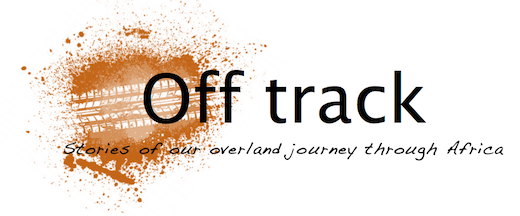PREPARATIONS
What to bring
- > Garmin Nüvi navigation device
- > Routable maps: OSM (Open Source Maps) and T4A (Tracks4Africa) maps. The OSM maps costs between 5 and 10 EUR and are supplied by various private sellers. T4A map for Africa costs about 58 USD. We have experienced that the combination works well. http://tracks4africa.co.za/ and http://wiki.openstreetmap.org/wiki/Africa for OSM.
- > Michelin street maps, paper, detail 1:4 million. These show gas stations, water points, some camping sites and road conditions.
- > APP of the Ministry of Foreign Affairs for country information, embassy advises etc.
- > Carnet de Passage, issued by the ADAC. This is a necessity to avoid paying customs at every border. (Egypt makes you pay anyhow and gives you Egyptian license plates. The Egyptions call the Carnet de Passage the 'Trip Ticket'). The Carnet de Passage is expensive, ca. 300 EUR in 2013, but costs only 200 EUR when you become member of the ADAC. This costs ca. 45 EUR.
- > Green insurance card from your insurance at home, for some European countries (e.g. Turkey) you might pass on your way south.
- > Yellow insurance card (COMESA) issued in Africa.
- > Micropur for water purification. Upside compared to chloor is that it is tasteless, but it needs 12 hours before the water is drinkable.
- > Tell your credit card company that you are going to Africa. This is to avoid them blocking your card when they think it was stolen.
- > Scan all your important documents and save them on your Skydrive, Dropbox or email.
- > Bring copies of all your important documents.
SHIPPING
Getting your car to Africa
There are several ways of getting a car to (in our case) Eastern Africa.
-
1. Ship the car in a container, guaranteed maximum security for the vehicle and your belongings inside. With container shipping, you also have the possibility to ship it to almost any port in the world.
Several agencies, also moving companies, offer full service packages, incl. customs. Hamburg and Rotterdam have the most ships leaving in central Europe.
-
2. Get it on a RoRo (Roll on Roll off) vessel in Bremerhaven or Antwerp. There are several agencies in Europe that offer to organize everything, including picking your car up at your home address and arranging customs procedures. These vessels (e.g. from Grimaldi lines), go down the West coast of Africa until Angola or to Egypt and Djibouti.
Downside here is that the car needs to be completely empty in order to pass German or Belgian customs, no way out here. Emptiness is also safer, since the car stands around on the docks waiting to be loaded with the keys inside. An open invitation to burglars!
-
3. By far the cheapest solution, but coming with a lot of hassle and waiting by yourself, is to drive your car to a mediterranean RoRo port, e.g. Salerno in Italy or Izmir in Turkey and get it on a vessel there. For doing so, you have to find a shipper, a local agency and a customs broker.
We chose Grimaldi Lines, who operate the EURO-MED lines. They anchor in many ports in the Mediterranean area, including Alexandria in Egypt. Grimaldi can tell you associated shipping agencies in any port. These agencies manage the commercial and operational loading and unloading of the vessel in both ports.
They can often also recommend you a customs broker who deals with the custom authorities and handles all the paperwork. http://www.grimaldi-lines.com/en/
Big advantage here is that in these countries, customs are not so strict and with the right customs broker, it is no problem that the car is not empty inside. Shipping your belongings is at you own risk though. Once the car is at its port of destination, you go to a similar shipping agency with your Bill of Lading you get from your agency in he port of departure. There you get a delivery order with which to pick up your car.
Since it is unlikely that you can travel together with your car on the ship in each of these 3 options, you have to fly to your destination.
